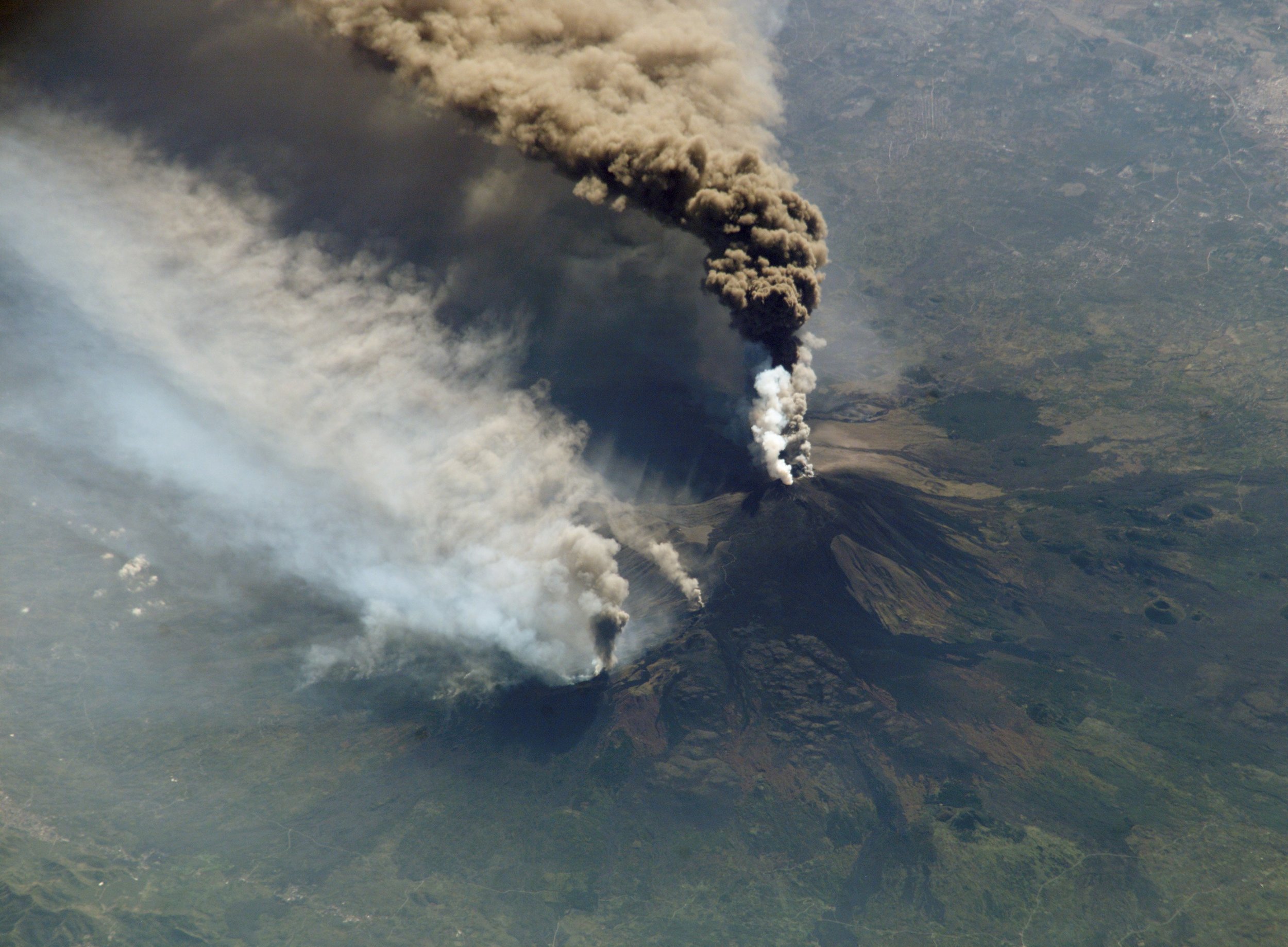By Evan Gough
Astronomers think they know how Uranus got flipped onto its side. According to detailed computer simulations, a body about twice the size of Earth slammed into Uranus between 3 to 4 billion years ago. The impact created an oddity in our Solar System: the only planet that rotates on its side.
New: follow us on Bluesky
Image Credit: Jacob A. Kegerreis/Durham University via AP
A study explaining these findings was presented at the American Geophysical Union’s (AGU) Fall Meeting in Washington DC held between December 10th to 14th. It’s led by Jacob Kegerreis, a researcher at Durham University. It builds on previous studies pointing to an impact as the cause of Uranus’ unique orientation. Taken altogether, we’re getting a clearer picture of why Uranus rotates on its side compared to the other planets in our Solar System. The impact also explains why Uranus is unique in other ways.
When the Solar System formed, it all started with a massive cloud of gas and dust. The cloud swirled as it became more dense, and eventually the Sun formed in the center, with the rest of the gas and dust swirling around it. The Sun contains about 99.8% of the mass in the Solar System, and as the remaining 0.2% swirled around it, clumps began to form into the planets we know today. As they formed, the rotation of the gas cloud was imparted to the planets. So, all of the planets rotate the same way, except for Uranus, (and Venus, which was likely struck by an asteroid.)
The planets aren’t all exactly alike; Earth is tilted on its axis a little, giving us seasons, and so are Jupiter, Neptune, and Saturn, to varying degrees. But they’re still oriented more or less the same as the rest of the planets and moons. But Uranus isn’t. It’s tilted on its side relative to its fellow planets, by about 98 degrees.
Near-infrared views of Uranus reveal its otherwise faint ring system, highlighting the extent to which it is tilted. - Image Credit: Hubble Space Telescope - NASA Marshall Space Flight Center via Wikimedia Commons
“Our findings confirm that the most likely outcome was that the young Uranus was involved in a cataclysmic collision with an object twice the mass of Earth, if not larger, knocking it on to its side and setting in process the events that helped create the planet we see today.” – Jacob Kegerreis, Durham University.
Mid-collision snapshots from the simulation. - Image Credit: Kegerreis et. al., 2018, Durham University.
For years, evidence has been building that supports a collision between Uranus and a body about twice the size of Earth. This most recent study builds on that evidence, and comes from a group of scientists led by Jacob Kegerreis from Durham University. According to an abstract from their presentation at the AGU, they “performed a suite of smoothed particle hydrodynamics (SPH) simulations to investigate in detail the results of a giant impact on the young Uranus.” SPH is a computational method developed in the 1970s to study astrophysical problems. It’s also used in ballistics, volcanology, and oceanography.
“We ran more than 50 different impact scenarios using a high-powered super computer to see if we could recreate the conditions that shaped the planet’s evolution. Our findings confirm that the most likely outcome was that the young Uranus was involved in a cataclysmic collision with an object twice the mass of Earth, if not larger, knocking it on to its side and setting in process the events that helped create the planet we see today,” said Kegerreis.
The results of their simulations explain not only Uranus’ obliquity, but also some of its other properties:
Not only does Uranus rotate on its side, but so do its five largest moons.
It’s magnetic field is also lopsided, and doesn’t go out the poles.
It’s the only planet where the interior heat doesn’t escape from its core.
The collision that made Uranus what it is today happened two or three billion years ago, but according to the simulation it was over in a matter of hours.
The simulation shows that a body about twice the size of Earth slammed into Uranus, tilting it to about 98 degrees. The object that slammed into it was made of rock and ice, and some of that material fell into Uranus’ core. According to the abstract, not all of it did, and that explains why Uranus doesn’t shed heat from its core: “Furthermore, most of the impactor’s ice and energy is deposited in a hot, high-entropy shell at a radius of 3 R. This could explain Uranus’ observed lack of heat flow from the interior…”
Diagram of the interior of Uranus. Credit: Public Domain
The abstract also says that this could help explain the planet’s weird magnetic field. While Earth’s magnetic field is tilted from its geographic poles by 11 degrees, Uranus’ field is tilted by 59 degrees.
Uranus Magnetic Field - Image: Public Domain
The simulation also suggests that the moons of Uranus formed after the collision. There was likely a ring of debris as the result of the impact, and the moons formed from that debris. That’s why the five largest moons rotate on the same axis as the planet.
Uranus, and the Solar System’s other ice giant, Neptune, are the least studied planets in our system. There’ve been no dedicated missions to either planet, though Voyager 2 did visit them briefly in the late 1980s. Scientists rely on observation and computer simulation to understand them both. This latest study builds on other evidence pointing to impacts as the cause of Uranus’ tilt. Once such study suggested multiple impacts were responsible, but that line of evidence hasn’t persisted.
It shouldn’t be a surprise to anyone that an impact is responsible for Uranus’ predicament. The history of the Solar System is full of impacts. The so-called ‘Late Heavy Bombardment‘ about 4 billion years ago pelted Earth and the inner Solar System with asteroids. Earth’s Moon may have been created from a collision between Earth and a doomed planet called “Theia”. On the Moon, Venus, and other bodies we can see the abundant craters caused by impacts. And, of course, a massive asteroid strike here at home brought on the demise of the dinosaurs and changed the history of our planet forever.
Many missions to Uranus have been proposed, but so far none have been approved. But space scientists are nothing if not patient. Eventually, a dedicated mission to this far-flung neighbour will be launched, and some of this ice-giant’s secrets will be unlocked.
This article was originally published at Universe Today
Sources and further reading:
Research Paper: Consequences of Giant Impacts on Early Uranus for Rotation, Internal Structure, Debris, and Atmospheric Erosion
Press Release: Cataclysmic Collision Shaped Uranus’ Evolution
AGU Conference Abstract: How Uranus Fell Over: Consequences of Giant Impacts with High Resolution Simulations
Why Uranus and Neptune Have Different Colors Than We Thought - (Universal-Sci)
If you enjoy our selection of content please consider following Universal-Sci on social media:











